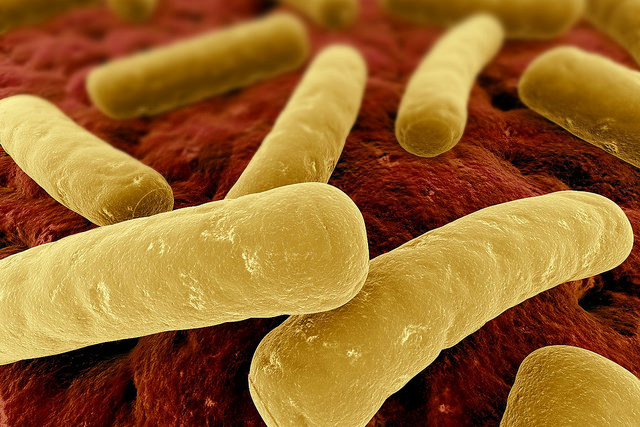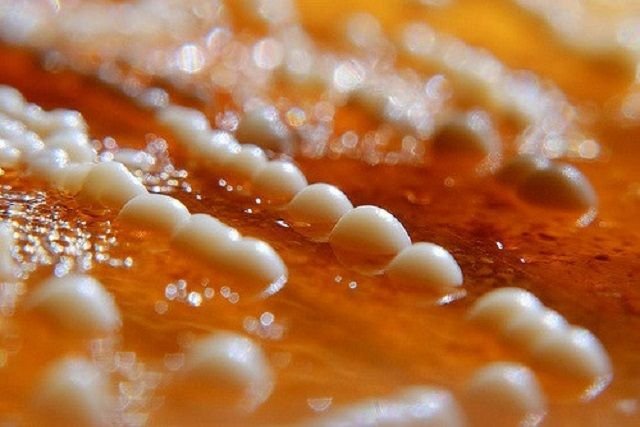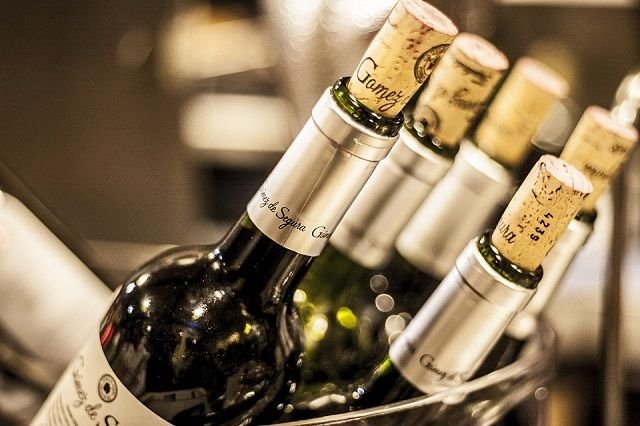BACTERIA AND THE HUMAN HOST
Twenty three days ago, I read @steepup’s comment where he wrote about killing all the microbes and I decided to give him at least two reasons why the microorganisms should not be killed but left to survive. Although some microorganisms are harmful, some are beneficial. You can read about these in my previous posts here and here. Today I will be writing about the relationship between bacteria and the human host and I really hope that @steepup and every other person planning to destroy all bacteria will read this and have a rethink.
The major relationship between bacteria and your body as an individual is symbiotic in nature meaning that the bacteria lives together with the human body with different kinds of relationship been exhibited at the different locations of the body.

Some organisms establish a more or less “permanent residential relationship” in or on our body without producing diseases under normal conditions, these groups of bacteria are called the normal microbiota or micro flora. In the large intestines bacteria such as Escherichia coli are present and synthesise vitamin K and some vitamin B. These vitamins are absorbed into the blood and distributed for use by the body cells. In exchange the large intestine provides nutrients for the bacteria so that they can survive. This is a mutualistic kind of relationship between the large intestine and Escherichia coli.
Many of the microorganisms that make up our normal microbiota are commensals (the organism benefits and the other is unaffected either positively or negatively) e.g. Corynebacteria that inhabits the surface of the eye ball; certain saprophytic mycobacterium also inhabits the ear and external genitals. These bacteria have no secretion and sloughed off cells and they do not bring any benefits or harms the hosts.
In some situations the normal microbiota prevents the overgrowth of harmful microorganisms. This involves competition among microbes and competition is in form of nutrients resulting into production of harmful substances thereby affecting pH and the availability of oxygen that is required for the survival and replication of most harmful microorganisms.

The normal bacteria microbiota of the adult human Vagina maintains a local pH of 3.5 to 4.5. This acidic pH is maintained by Lactobacillus which is the normal resident in this environment. Candida albicans, the yeast that causes vaginitis can’t grow under this condition therefore it’s number are always kept low in this environment having in mind that the greater the number of cells the better the pathogenic capability of an organism.
Some individual believe that excessive douching, the application of deodorants or the use of antibiotics will make clean and prevent the infection by germs, it is important to note that the use of these products increases the pH of the vagina to nearly neutral thus enabling Candida albicans to flourish and therefore becomes the dominant microorganisms, this condition leads to vaginitis. The use of vagina wash for individuals who are already infected and trying to clean up is purely a waste of time, using this throws the normal microbiota off balance and this can also help the spread of the infection further to other parts.
The use of antibiotics for urinary tract infections by women also reduces Lactobacillus (The organism responsible for maintaining the acidity of the vagina and therefore not allowing candida to grow more than normal) and are risks of developing candidiasis. The mouth is another example but in this case the organism Streptococci produce compounds that prevent the growth of most Gram positive and Gram negative cocci. With oral temperature that is conducive for the growth, Streptococci is able to overcome the mechanical flushing mechanism of the mouth by attaching itself to the teeth and gums
The cell of Escherichia coli that is present in the large intestine are able to produce Bacteriocin that inhibit the growth of other bacteria of the same or closely related species such as pathogenic Salmonella and Shigella. The bacterium that produce a particular Bacteriocin is normally not killed by the Bacteriocin but may be killed by another, in other words each bacterium produces its own specific kind of Bacteriocin, Bacteriocin are therefore used in medical microorganism to identify different strains of bacteria.

The indiscriminate use of antibodies or use without prescription should be avoided at all times Clostridium diffcile invades the intestinal linings and releases toxins that induces diarrhoea ranging from mild diarrhoea to severe or even fatal colitis, fever and abdominal pain especially after the use of antibiotics. However,by making host receptors unavailable, competing for and starving this bacterium of available nutrient, the organisms that have developed permanent residential relationship in the large intestines usually inhibits Clostridium diffcile effectively . You might want to read about my previous post on self medication here
When things go wrong...
Interestingly, “permanent residential organisms” that ordinarily would not cause diseases in their habitat in a healthy person for example Escherichia coli which is a mutualistic organism in the intestine could become harmful if its gains access to their body sites such as the urinary bladder, lungs, spinal cord or wound and may lead to pulmonary infection, urinary infection or meningitis or abscesses
Microbes that normally live on the skin can gain access through the broken skin or mucous membrane. Tooth decay and gum disease are caused by bacteria and are considered members of the normal microbiota of the mouth if the individual involved do not maintain good oral hygiene especially If the host is already weakened by infection or the presence of underlying disease then microbes that are normally harmless can become disease causing agents.
Neisseria meningitidis is often considered as part of the Nasopharynx of human only and can spread through the respiratory route and can cause meningitis if it finds its way to the brain and spinal cord. Streptococcus pneumonia is also a normal resident of the throat and nose, can cause a kind of pneumonia if it gets to other areas if they are left alone in their normal habitat, they do not cause infection.
The Possible reasons for weakened or compromised immunity.
- Prolonged use of antibiotics
- Presence of Underlying disease
- Malnutrition
- Alcoholism
- Trauma from surgery or injury
- Hormones and genetic deficiencies

Conclusion
Some bacteria on the human body uses the nutrient, space available and then produce chemicals that repel pathogens from attacking the human host, an example is the production of fatty acids on the skin surface by Corynebacteria, thereby preventing the invasion and colonization of pathogens. The normal flora of the human host are harmless and beneficial although they may become pathogenic when the normal condition is altered either compromising the host immunity or by altering the normal condition of the body that prevents this opportunist from penetrating the bloodstream and tissues of the host.
Great job explaining why most bacteria are not harmful. Another factor making bacteria seem more dangerous than they are is our current nomenclature system. E. coli, for example, has a ton of sub-species that vary in effect on humans. Some are beneficial (like the vitamin K producers you mentioned) while others are pathogenic. Often any pathogenic strain is called E. coli without making a sub species distinction which can skew perceptions on how dangerous all E. coli species are.
@tking77798. Thank you for reading and commenting. I hope this article will pass the message. People should understand that not all microorganisms are pathogenic.
@ugonma,nice post.
A great article that explains about the importance of these microbs in our body. Antibiotics abuse can clear up normal flora which removes the natural crowd in that part of the body, causing the harmful microbs to flourish. Situations such as in any immunocompromised state where you'll have weaker immune system which can cause some of these harmless creatures to become lethal to the human body. Nicely written !
Thank you @soulesque.
Good article,, as a medical practitioner I have seen many bacterial resistances due to unreasonable use of antibiotics, I remember one, a patient who has pneumonia, we run some tests and found that he was infected by super_bacteria,, multiresistant ans no effecient drug worked. Unfortunately, it killed him.. so yeah killing bacteria randomly is too dangerous.
@fancybrother, thank you reading. May the soul of the patient rest in peace. Hope it was not frustrating managing his case. Public education about the use and abuse of antibiotics shouild continue if we must control pathogens effectively.
As a trained microbiologist myself, I can only comment you @ugonma for this beautiful piece.
Many see microbes as enemies, I do not blame such people as such, the part people tend to see are the harmful effects of pathogenic, opportunistic and spoilage microorganisms! But there's more to microorganisms than that.
Without microorganisms, life as we know it today will be impossible.
Let me give one more simple examples:
I. Without microorganisms, digestion would be impossible.
In other ways, there would be no wine, a very important class of beverages. Fermentation, process that produces alcoholic beverages, is as a result of the activities of yeast, a microorganism.
Without microorganisms, when living thing die, there would be no decaying to return nutrients back to the geological cycle etc.
@Iidowu-kunlere, thank you for reading and contributing to this post.
Good, I think I should get more credit on this post 😁. After, not all microorganisms are dangerous as you've shown us now. Well done @ugonma, As a chemist, we use microorganisms in several ways, i.e to modify chemical structure of some compounds e.g using fungi to modify some indole compound. Also we use it in pharmaceutical industry, and many more.
@steepup, I appreciate the fact that you read this article. Thank you and dont worry, you will get more credit.
😎👏😂🍬👏
Some microbes are actually essential for our healthy living. I amazed the first time I heard the whitish substances our mouth produce early in the morning help us in the process of digestion.
Thanks for further broadening my knowledge of microbes.
Thank you for reading and commenting. Micobes are indeed essential.
THANK YOU!
Good work, i've been enlightened.
Thank you
You open my eyes to the positive side of microorganisms today. Thanks
Thank you for reading.
Good work, very enlightening.